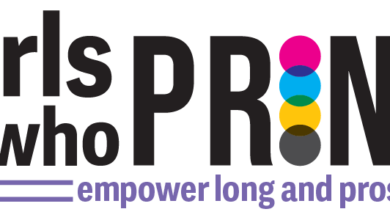
Competitive advantage — what does that really mean? It means a company is better at doing what it does than its competitor, and it will have an advantage over them in selling its product in the marketplace. This generally falls into these three categories: price, quality, and service.
Many business managers will argue that you cannot be the best in all three. I tend to be one of those managers. If you have a high-quality product and fantastic service, it will cost you more to produce it and service it, so your prices will be higher to make a profit. If your prices are low, then you need to give up on time spent on service or produce a lower quality product to keep costs down. If you offer first-class service and receive top-of-the-line acclamations and best-in-class reviews from your customers, then most likely, either your product costs more, or it’s of lower quality. It may not be much of either, but you have to give up something to gain something. The economic term for this is called “opportunity cost,” which means a trade-off. You have to sacrifice something to obtain something else.
When I started my business in 1987, I entered a print market in its peaking years, but no one knew it. For about 10 years, my company grew well, and the business was great. I was adding about one or two new employees each year. Then, by the end of the ’90s, things started to change, and the print market began contracting. The internet was becoming popular.
By the mid-’90s, the desktop computer became more affordable, and many families bought them for their homes. Technologies were advancing in software and low-cost desktop printers. Digital media was competing with television, newspapers, and magazines. And the print market was starting to evolve toward digital production instead of conventional manufacturing. From around 1995-2015, more than half of printing companies in the U.S. closed their doors, and many others consolidated or merged to keep the doors open. By 2020, about a third of all newspapers had shut down. The times, they were a-changing.
So how does a printing company, or any business for that matter, gain a competitive advantage? Better yet, what does it take to make a profit and keep from going out of business? There are a few things I believe are critical factors for success.
Be an expert
First, you need to be an expert at what you do. If you aren’t, you won’t make it and people won’t come to you for solutions. I worked for another printing company for 12 years before I started my business in my garage. A year later, I moved into a business district, bought a building a year after that, and have been there ever since. All because I brought a level of knowledge to the customer and offered advice and guidance when they either didn’t know what they wanted at all or needed a little direction.
Do what you love
Second, you have to love what you do. If you don’t, your ambition that drives the entrepreneurial spirit to achieve success won’t be enough to sustain you, and you’ll go out of business. If you would rather be doing something else, then you should be doing something else.
Identify your competitive advantage
You need to figure out what your competitive advantage is. It’s going to be either price, quality, or service, and you’ll need to be the best at two out of three if you want to grow your business and be in it for the long haul.
Know your current ratio
One other thing you want to look at is your current ratio. Your current ratio is how much debt you have versus your assets. Your business should have at least a 2:1 current ratio, meaning you need to have two times the amount of current assets as you do current debt. My company’s current ratio has usually been in the 3:1 range or higher. My advice: Don’t buy stuff unless you absolutely need it.
You might think that if you spend $50,000 on a new piece of equipment, it will make you more money, but if you don’t already have the work orders that support that new machine, then you really don’t need it. The “Field of Dreams” idea, “If you build it, they will come,” is a total fantasy. Pay cash whenever possible, or at least borrow as little as possible, and learn to read and understand your balance sheet.
Serve the right customers
The long-time motto of “the customer is always right” is true, except when it’s not. Don’t be afraid to let customers go if those customers are creating problems for you. Some customers will never be satisfied no matter what you do, and if there is no money in it, then let them go and focus on your other customers.
And just as a reminder, there are only three types of customers: existing customers (the ones you have), switch customers (the ones your competitor has, and you hope to gain), and new customers (the ones who are not in the marketplace yet). Take care of your existing customers and be on the lookout for the other two.
Build relationships
Unless you’re an online business, one of the best forms of marketing your company is a referral by someone who knows you. People like to buy their products from people they can trust to give them an honest deal (which is not always price and often is service and quality), and when someone they know tells them about you, it’s better than any other form of advertising. If you build honest relationships, your customers are likely to tell their inner circle about you.
Don’t risk everything on the top 5%
And one final thought on customers: Don’t put all of your eggs in one basket. Generally, most businesses receive 80% of their sales revenue from the top 20% of their customers. If you’re getting 80% of your sales revenue from the top 5% of your customers, you’re in a red flag zone. If you lose one or two of those customers, that could really hurt your business income. Big customers with big orders are nice, but when they go away, will your business follow?
According to the U.S. Bureau of Labor Statistics (BLS), approximately 20% of new businesses fail within the first two years of being open, 45% within the first five years, and 65% within the first 10 years. Only 25% of new businesses will succeed to 15 years or more.
There are many books about all of these subjects, and what I’ve outlined is only a micro-snippet of what you need to know. Keep educating yourself; it’s a life-long process. Be honest, be sincere, and love your neighbor (or at least be willing to put up with them) because what goes around comes around. Treat people like you want to be treated. You won’t make it if you’re trying to be the wolf of Wall Street. Be smart and keep risks and debt at a minimum, and you could be telling someone else how you did it 30 years from now.



